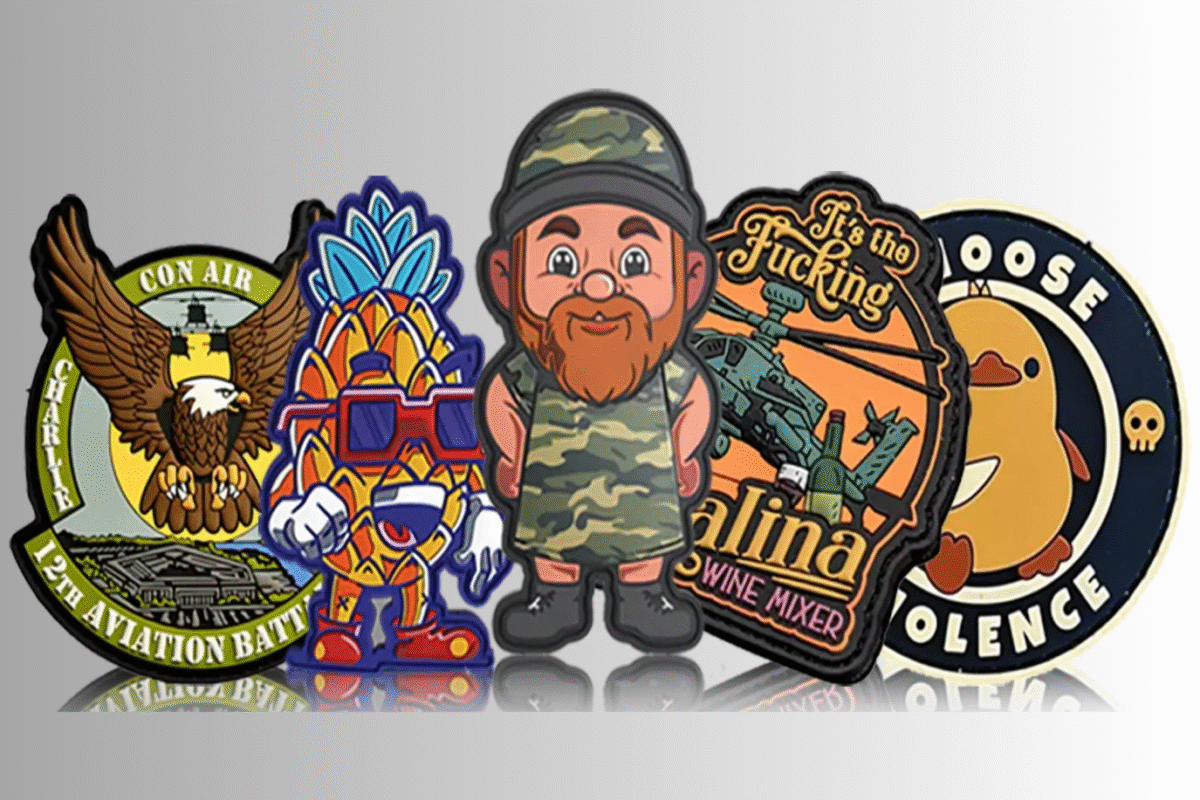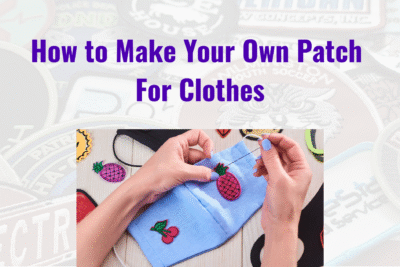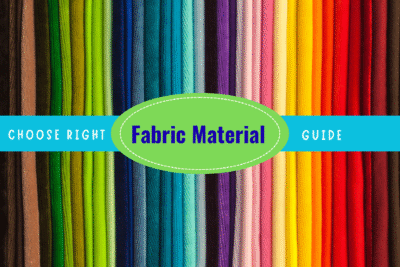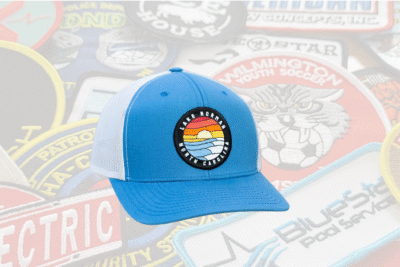PVC patches (made from the polyvinyl chloride) have rubbery symbols that are vibrant in color, with a 2D/3D texture, and outstanding durability. They’re durable, waterproof and pliable making them suitable for custom-designed PVC patches and badges of military morale outdoors equipment, promotional branding and accessories for fashion.
Contrary to traditional patches that are woven or embroidered, PVC patches offer more clarity, bright colors, and superior performance in rough environments.
Why Choose PVC Patches?
Durability & Weather Resistance
PVC patches are resistant to UV fading, water scratches and wear. They are perfect for uniforms and sports equipment, or outdoor clothes.
Design Flexibility & Color Vibrancy
They are able to support multiple vivid shades using Pantone matching. They also offer areas that are raised or recessed to create the illusion of 3D, something embroidery cannot achieve.
Shape & Size Customization
PVC patches are shaped into rectangles, circles and shields. They can also be cut into custom shapes, and sizes ranging between 0.75” up to 5”, based upon the purpose.
Step-by-Step Process: How to Make PVC Patches
1. Plan & Define Patch Purpose
Ask yourself what is the purpose that your patch serves? Branding? Identification tactic? Fashion accessory? Your intended use will dictate the shape of your patch, its size, type of backing (Velcro sew-on magnet) and design tone.
2. Design Your PVC Patch
Create your own graphic design that is vector-based (Adobe Illustrator, CorelDRAW or CAD). Make sure to focus on strong lines, clean designs, a small colors, and readability in smaller dimensions. Be aware of the raised and recessed layers within the final patch.
-
Make use of Pantone color codes to ensure precise match.
-
Do not use materials that are thinner than ~0.3 millimeters as they could not properly mold.
3. Prepare the Mold
Convert your artwork into an CNC-machined mold (usually aluminum or steel). This mold can capture every particulars of design: text texture of the surface and color divisions. Small batch manufacturing processes might utilize silicone molds, however metal molds provide durability and high-quality.
4. Mix PVC Compounds & Pigments
Mix the PVC with plasticizers (typically at a 4:1 ratio) and color stabilizers, pigments, and other additives such as UV inhibitors, or glow-in-the dark. Make sure that the mixture is thoroughly mixed as well as free from air bubbles.
5. Injection Molding & Layering
Inject the hot PVC color into your mold using pressure. For designs with multiple colors or 3D Layer-by-layer filling bake one layer, then inject the next color, and then cure. The temperature range typically is 150 to 220 degrees Celsius dependent on the manufacturer.
6. Curing & Demolding
After the full curing in the mold, let it cool before carefully removing the piece to ensure that it is not deformed. Then let them completely harden prior to cutting. Curing times can vary between minutes and hours.
7. Trim & Finish
Cut off your edges (remove flash) by using precise cutting equipment or die-cut machines. Alternately, apply finishes like matte or glossy coats or metallic highlights or paint.
8. Add Backing Attachment
Select a method of backing:
-
Velcro hook-and-loop to make patches that are removable (military/tactical usage).
-
Sew-on Sew-on: stitching fabric backing to clothing.
-
Adhesive Iron-on or pressure-sensitive.
-
Magnetic Magnets embedded for use on metallic surfaces.
Attachment is either bonded with heat or.
9. Quality Control & Packaging
Inspect for:
-
Detail clarity and accuracy of molds
-
Color accuracy vs. design spec
-
Structural durability, backing adhesion
-
Flexible, weather-resistant
And then package them by bulk or individually in protective sleeves or boxes.
DIY Vs. Professional Manufacturing
Although some enthusiasts attempt small-scale DIY projects using moulds made of silicone or 3-D printers real Patch manufacturing using PVC generally requires special equipment, molds made of metal, along with industrial process. Pros offer consistent quality, faster production, and higher precision–especially for orders over dozens or intricate designs.
Design & Production Tips for Best Results
-
Reduce colors down to 4- 8 shades to ensure that production accuracy and cost are balanced.
-
Make use of Pantone color match to ensure brand fidelity.
-
Design using large fonts, bold forms, and stay clear of micro-text.
-
Minimum thickness should be > 0.3 millimeters; border should not be less than 1 millimeter.
-
To create 3D patches: design layers in design prescriptively.
-
Select the backing you want based on its use: Velcro for military, adhesive for promotions or sew-on for garments.
Common Uses for PVC Patches
-
Tactical & Military Gear Morale badges, insignias of the unit Velcro-ready.
-
Outdoor Equipment: backpacks, gear, jackets.
-
Fashion and Branding Logos that you can design for caps, hoodies and accessories.
-
Team Sports & Events badges for promotional giveaways.
Troubleshooting FAQs
Can gradients be made onto PVC?
PVC molding does not use solid layer of color pigments. Gradients have to be created by layering or printing post-molding.
What size is text?
Typically do not use design elements that are smaller than 0.3-0.5 millimeters. Fine text can blur or appear to fill in.
How long will production require?
Standard lead times range from several weeks to days based on the creation of molds, the approvals, as well as the amount.
PVC patches washable?
Yes! they resist fading and retain their the integrity of the material by repeated washing. Clean them with a soft soap or damp cloth Avoid dry cleaning and excessive temperatures.
Benefits of PVC Patch Manufacturing for Your Business
Insisting on customized patches made of PVC will result in:
-
High impact on the visual bold design, clear lines, vibrant colors
-
Longevity waterproof and UV stable patches that last
-
Attachment flexibility from hook-and-loop tearaways all the way to iron-ons
-
Scalability production-ready for large batches or recurring orders
Each brand, club or team could benefit from durable, crisp PVC patches to help define their branding or marketing strategy.
Conclusion
With this complete guide, you’ll learn the complete PVC patches manufacturing procedure, from drafting the artwork as vectors, making precision molds, putting it into injection as well as layering PVC compounds, all the way cutting, curing backing and quality control. For tactical equipment, fashion branding or a custom item, PVC patches offer unmatched clarity, color and longevity.





